Case Studies
Inspection System for Rubber Grommets
Force Manufacturing was contacted to produce a fully automated vision inspection system for rubber “grommet” parts. Force worked with the customer to design a turnkey system that would inspect two different size parts at 200 PPM (parts per minute). Because of the high resolution image and amount of pixels being checked, the image processing time would limit the machine speed.
Although this is a rather small system when compared to our previous projects it did have some large challenges. A rubber part that bounces, difficult geometry to hold, a fast reject circuit, being able to see through the part at the moment of inspection, the customer needing the system “yesterday”, and a limited budget.
Ten weeks after the customer faxed Force a purchase order this automation system was at the customer’s facility. Force Manufacturing concept designed, final designed, fabricated, assembled, tested, and achieved final customer runoff of this fully automated inspection system all within 10-weeks.
Details:
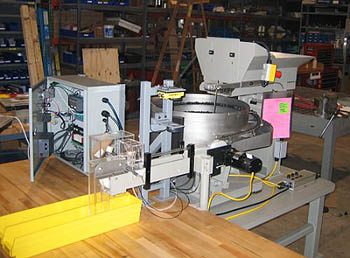
Yellow bins where used before holes were cut in table. The “accepted” parts exit conveyor straight through while the “rejected” parts are blown off. A separate wood table was used to reduce the vibration to the electrical control panel, the Cognex camera, and the lights. The customer will have a computer on the table also.
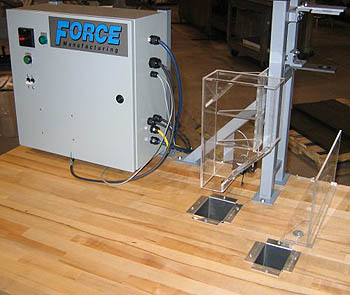
The clear acrylic “test” chutes allowed our designers to see the actions of the bouncing rubber part. Chutes were refined at least three times before final chute design was produced. One of the final chutes is shown above with the conveyor removed.
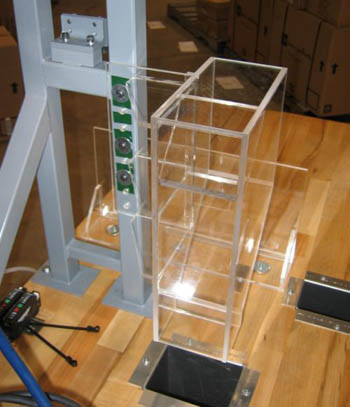
Force Manufacturing strongly believes in designing automation machines and systems in a modular form. This allows the customer to easily change out an item if any future modifications are desired. The chute and mounting bracket (shown above) have several extra holes to allow easy height adjustment and to allow for future changes. The green items are to reduce the noise from vibration that the feeder bowl can cause.
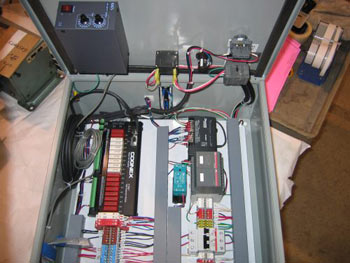
Although the Cognex camera may have been able to control the entire system, a PLC was used for many features. This allowed the Cognex camera to be dedicated to strictly vision related logic. The PLC controlled the various counters, air blow off delay, air duration, and photo eyes.
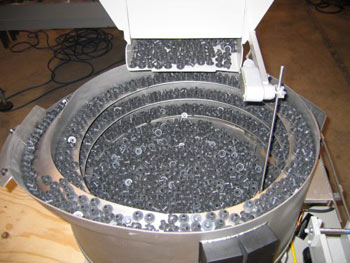
The parts were made of Buna-N rubber with a soft durometer and “commanded respect” according to one bowl manufacturer. A few other bowl manufactures would not provide us a firm price because of the material and geometry of the part. Force Manufacturing found a manufacturer that quoted and supplied a bowl that achieved the 200 PPM (parts per minute) at only 75% bowl speed.
